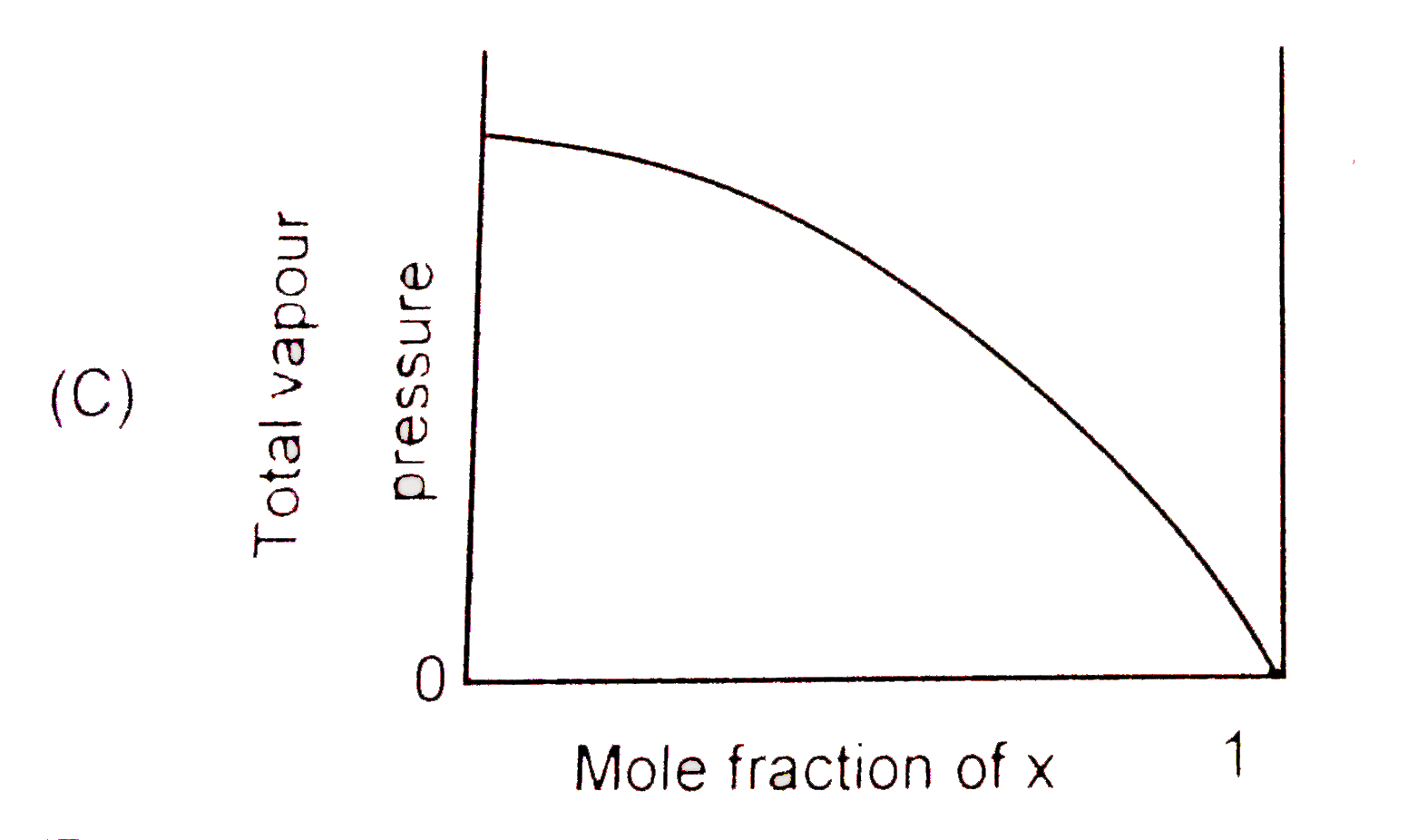Using Raoult's law explain how the total vapour pressure over the solution is related to mole fraction of components in the following solutions.
(i) CHCl3(l)andCH2Cl2(l)
(i) As both the components are volatile, in the solution
pCHCl3=xCHCl3×p∘CHCl3 and pCH2Cl2×p∘CH2Cl2
PtotalorPsoln=xCHCl3p∘CHCl3+xCH2Cl2p∘CH2Cl2=xCHCl3p∘CHCl3+(1−xCHCl3)p∘CH2Cl2=(p∘CHCl3−p∘CH2Cl2)xCHCl3+p∘CH2Cl2
Related Playlists
- BOOK - PRADEEPCHAPTER - SOLUTIONSEXERCISE - ADDITIONAL QUESTIONS (VERY SHORT ANSWER QUESTIONS)41videos
SOLUTIONS
- BOOK - PRADEEPCHAPTER - SOLUTIONSEXERCISE - ADDITIONAL QUESTIONS (SHORT ANSWER QUESTIONS)60videos
SOLUTIONS
- BOOK - PRADEEPCHAPTER - SOLUTIONSEXERCISE - NCERT (EXEMPLAR PROBLEMS WITH ANSWERS, HINTS AND SOLUTIONS) (ASSERTION AND REASON TYPE QUESTIONS)4videos
SOLUTIONS
- BOOK - PRADEEPCHAPTER - REDOX REACTIONS EXERCISE - Assertion reason type question16videos
REDOX REACTIONS
- BOOK - PRADEEPCHAPTER - SOME BASIC CONCEPTS OF CHEMISTRYEXERCISE - Competition (FOCUS) JEE (Main and Advanced)/Medical Entrance SPECIAL (VIII. Assertion-Reason Type Questions)(Type II)13videos
SOME BASIC CONCEPTS OF CHEMISTRY
Similar Practice Problems
- Question 1 - Select One
Relative loweringof vapour pressure of a dilute solution is 0.2. What is the mole fraction of non-volatile solute ?
A0.8B0.5C0.3D0.2 - Question 1 - Select One
The plot of total vapour pressure as a function of mole fraction of the component of an ideal solution formed by mixing liquids X and Y is
A B
B C
C D
D
- Question 1 - Select One
An ideal solution of two liquids is a solution in which each component obeys Raoult's which states that the vapour pressure of any component in the solution depends on the mole fraction of that component in the solution and the vapour pressure of that component in the pure state. However, there are many solution which do not obey Raoult's law. In other words, they show deviations from ideal behaviour which may be positive or negative. However, in either case, corresponding to a particular composition, they form a constant boiling mixtures called azeotropes.
Which of the following mixture do you expect will not show positive deviation from Raoult's law ?ABenzene - ChloroformBBenzene - AcetoneCBenzene - EthanolDBenzene - Carbon tetrachloride - Question 1 - Select One
An ideal solution of two liquids is a solution in which each component obeys Raoult's which states that the vapour pressure of any component in the solution depends on the mole fraction of that component in the solution and the vapour pressure of that component in the pure state. However, there are many solution which do not obey Raoult's law. In other words, they show deviations from ideal behaviour which may be positive or negative. However, in either case, corresponding to a particular composition, they form a constant boiling mixtures called azeotropes.
Which of the following mixture do you expect will not show positive deviation from Raoult's law ?Ashows no deviations from Raoult's lawBshows a positive deviation from Raoult's lawCshows a negative deviation from Raoult's lawDis staurated - Question 1 - Select One
An ideal solution of two liquids is a solution in which each component obeys Raoult's which states that the vapour pressure of any component in the solution depends on the mole fraction of that component in the solution and the vapour pressure of that component in the pure state. However, there are many solution which do not obey Raoult's law. In other words, they show deviations from ideal behaviour which may be positive or negative. However, in either case, corresponding to a particular composition, they form a constant boiling mixtures called azeotropes.
A solution has a 1:4 mole ratio of pentane to hexane. The vapour presssures of the pure hydrocarbons at 20∘C are 440 mm of Hg for pentane and 120 mm of Hg for hexane. The mole fraction at pentane in the vapour phase would beA0.2B0.478C0.549D0.786 - Question 1 - Select One
P→tal=x1p∘1+x2p∘2
=p_1^@ + (p_2^@ - p_1^@) x_2'
I. Total vapour pressure of the solution is related to the mole fraction of any one component.
II. Total vapour pressure of the solution varies exponentially with the mole fraction of component 2.
III. Depending on the vapour pressure of pure components 1 and 2, total vapour pressure over the solution decreases or increases with the increase of the mole fraction of component 1.
select the correct staements derived from the equation.AI and IIBII and IIICIII and IDAll of the above
Similar Questions
Using Raoult's law, explain how the total vapour pressure over the solution is related to mole fraction of components in the following solutions : (i) CHCl3(l) and CH2Cl2(l) (ii) NaCl(s) and H2O(l)
View SolutionUsing Raoult's Law explain how the total vapour pressure over the solution is related to mole fraction of components in the following solution.
CHCl3 (l)andCH2Cl2(l) (b)NaCl(s)andH2O(l)View SolutionUsing Raoult's law explain how the total vapour pressure over the solution is related to mole fraction of components in the following solutions.
(ii) NaCl(s)andH2O(l)View SolutionThe vapour pressure of pure benzene and toluene at 40∘C are 184.0 torr and 59.0 torr, respectively. Calculate the partial presure of benzene and toluene, the total vapour pressure of the solution and the mole fraction of benzene in the vapour above the solution that has 0.40 mole fraction of benzene. Assume that the solution is ideal.
View Solution

